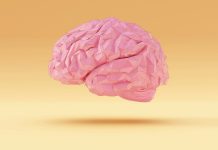
In Alzheimer’s disease, the peptide amyloid-beta begins to form clumps in the brain. This process is called aggregation and the clumps so created are called aggregates.
The treatment methods for Alzheimer’s disease that are currently in clinical trials are attempts to bind to these disease-causing aggregates.
But they are unable to bind to the smallest aggregates, which many now believe are the most toxic to neurons.
In a recent study at Uppsala University, researchers found a new treatment method that increases the body’s own degradation of the building blocks that lead to the deadly clumps.
The study is published in Theranostics. One author is Fadi Rofo.
This new treatment method could degrade the building blocks from which these aggregates form before they have a chance to aggregate.
It therefore reduces the formation of all types of aggregates.
Scientists have known that the peptide somatostatin can activate the body’s own degradation of amyloid-beta, which is the peptide that forms the aggregates.
However, it has not been possible to use somatostatin as a drug in the past because it has a very short half-life in the blood of only a few minutes, and does not cross the blood-brain barrier into the brain where the aggregates are formed.
So to be able to use somatostatin as a treatment, the team fused it to a brain transport protein which allows the somatostatin to enter the brain. This has proved very effective.
In the study, the researchers saw the greatest effect in the hippocampus, the part of the brain that forms memories and the first part to be affected by Alzheimer’s disease.
They say the fact that they have seen that the effect is most evident in the hippocampus, in particular, is very good.
The hope is that this method will be able to act in a very targeted way and have few side effects, which have been a problem in other studies.
Copyright © 2021 Knowridge Science Report. All rights reserved.



